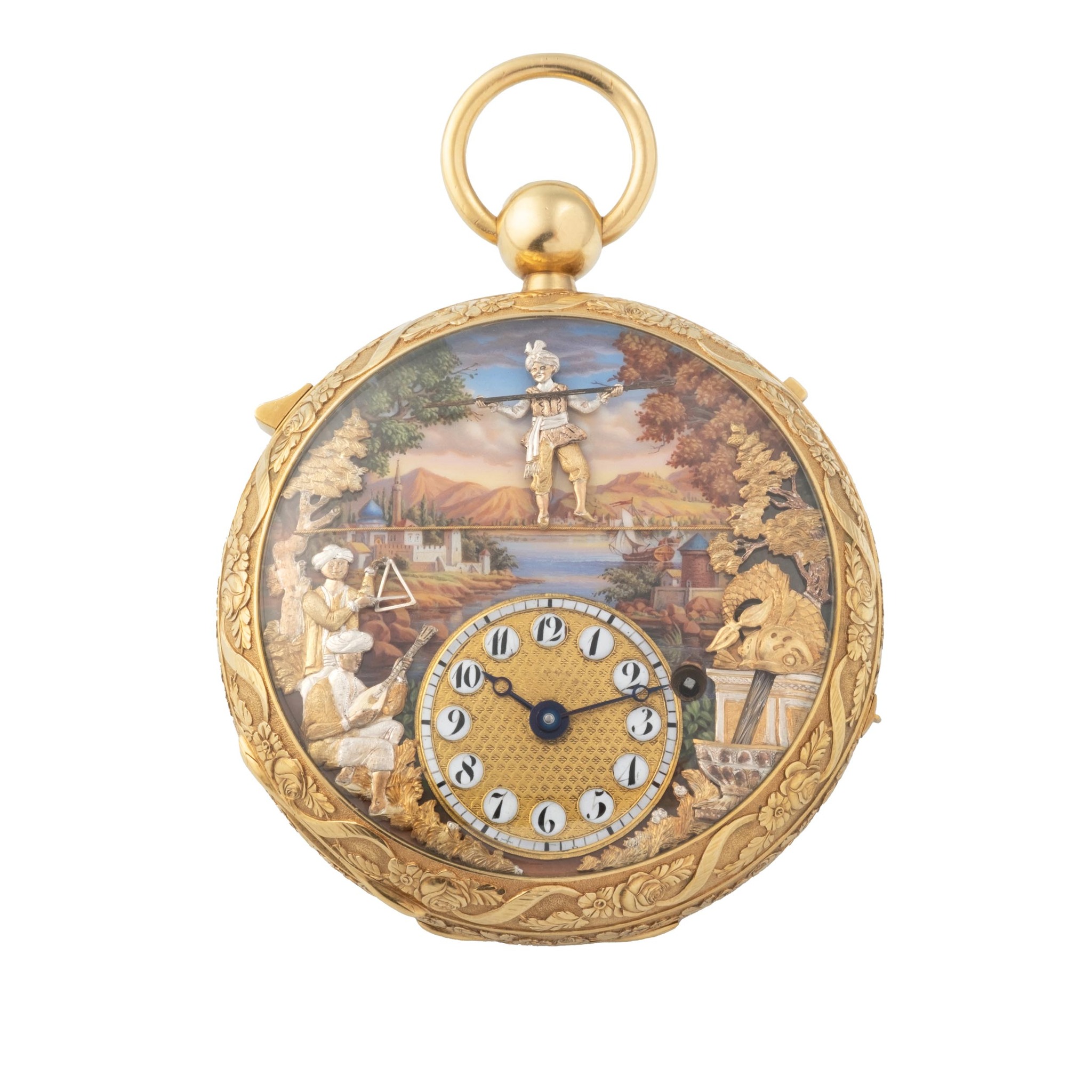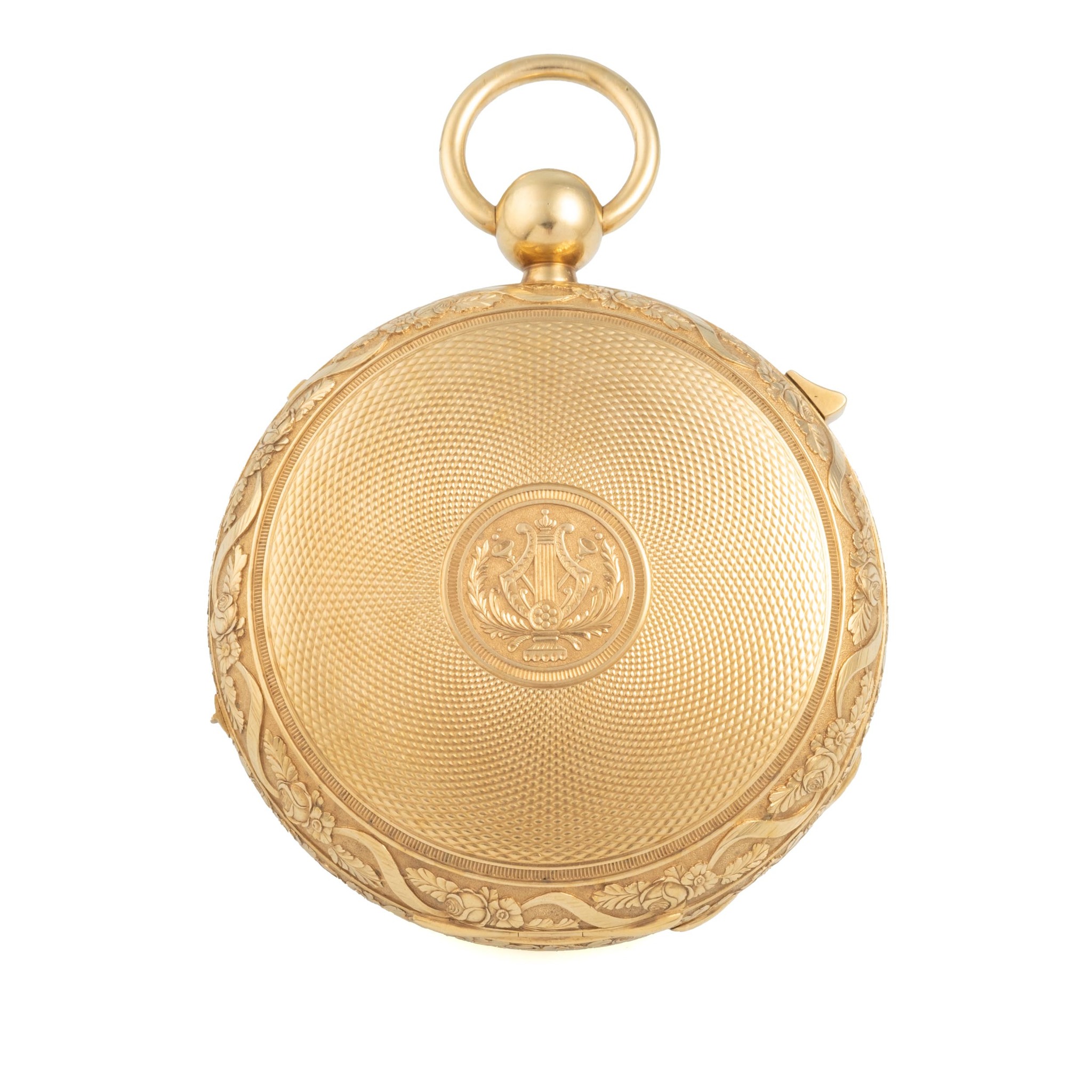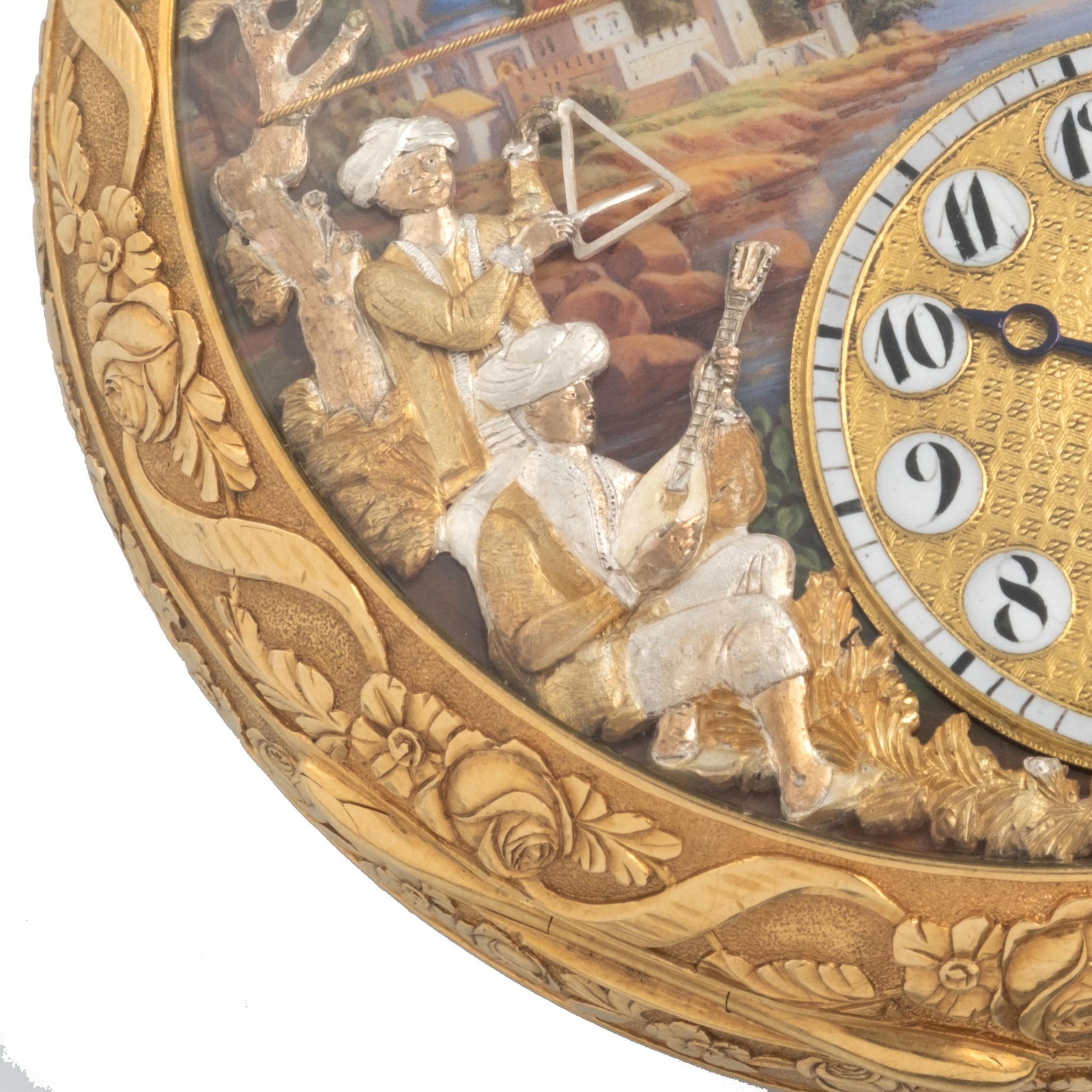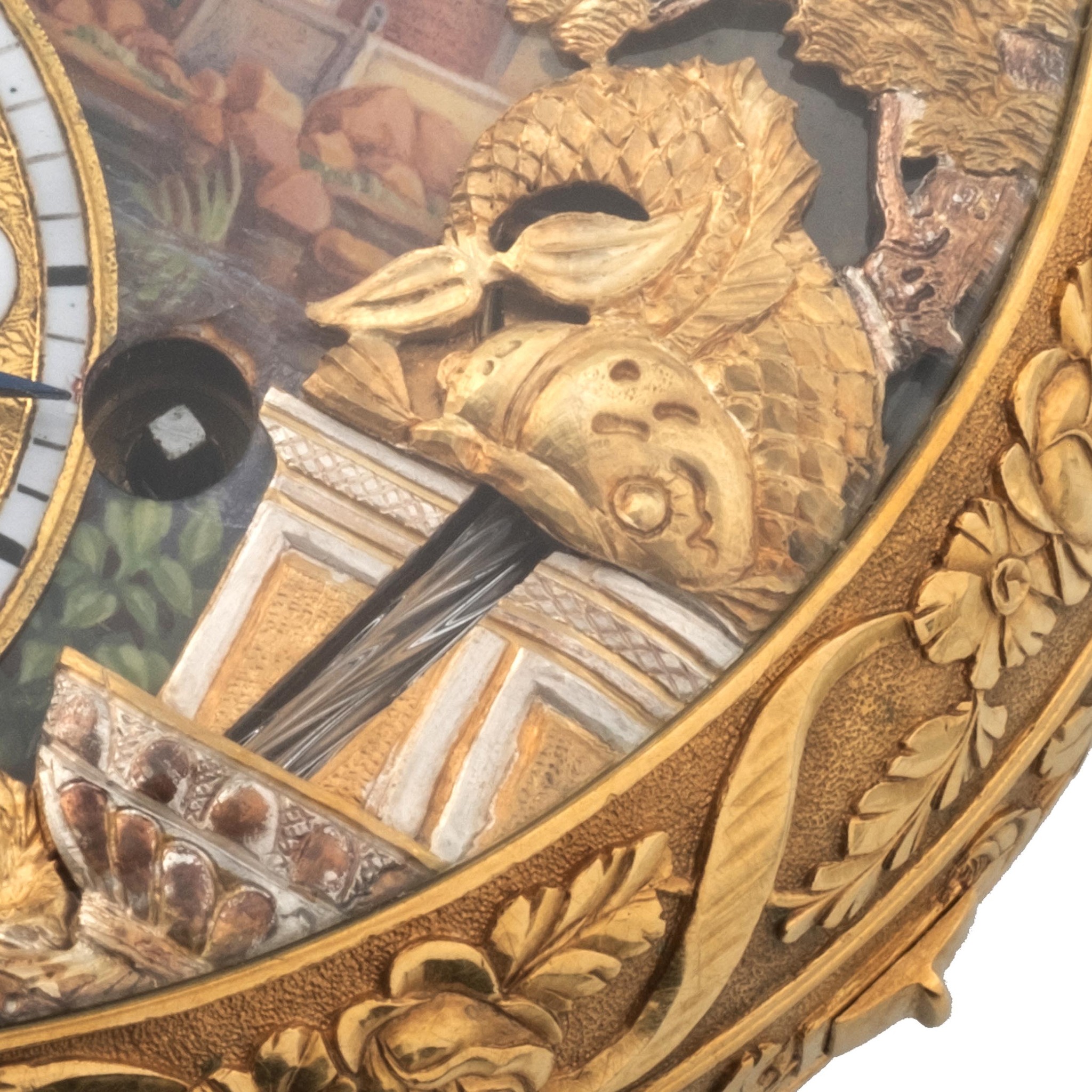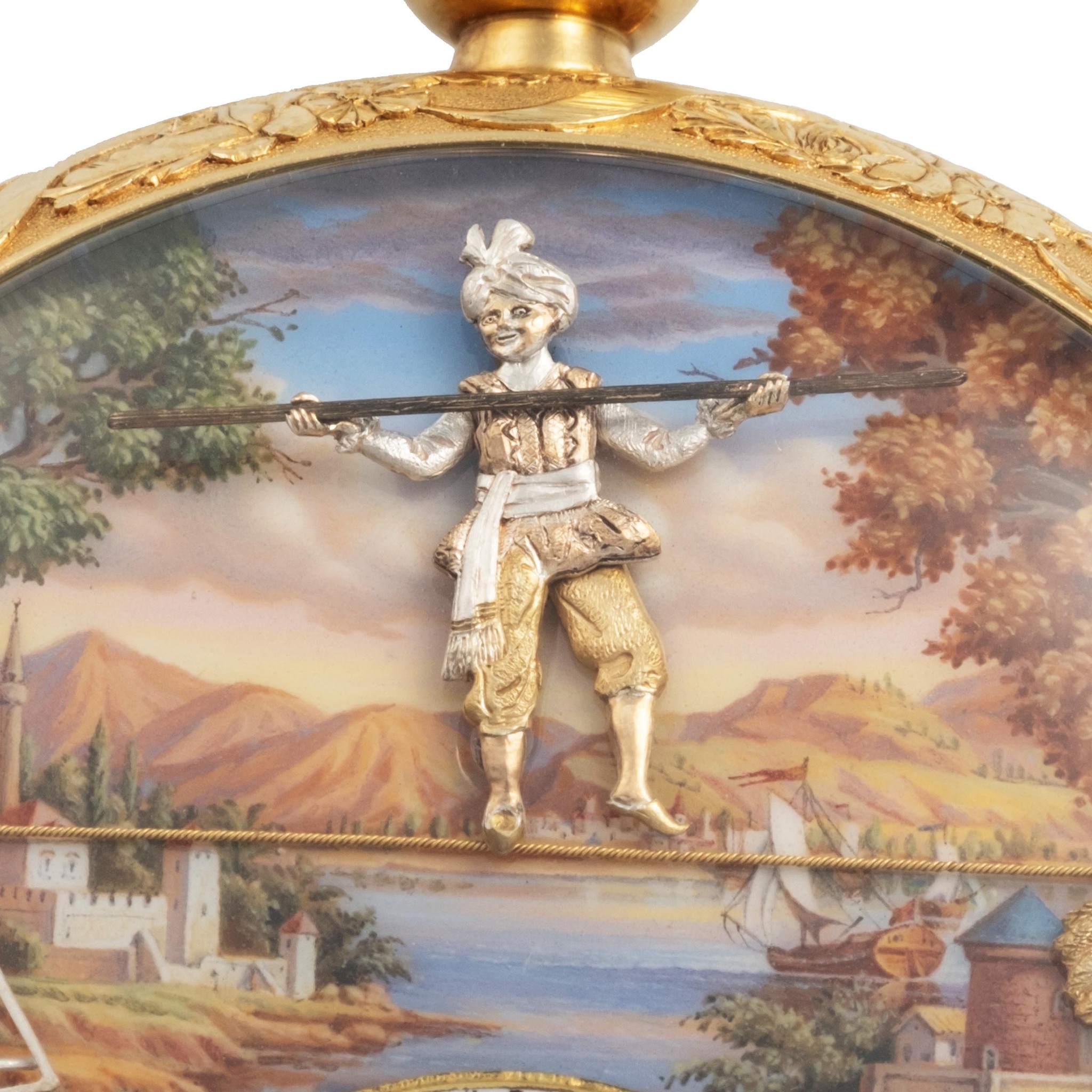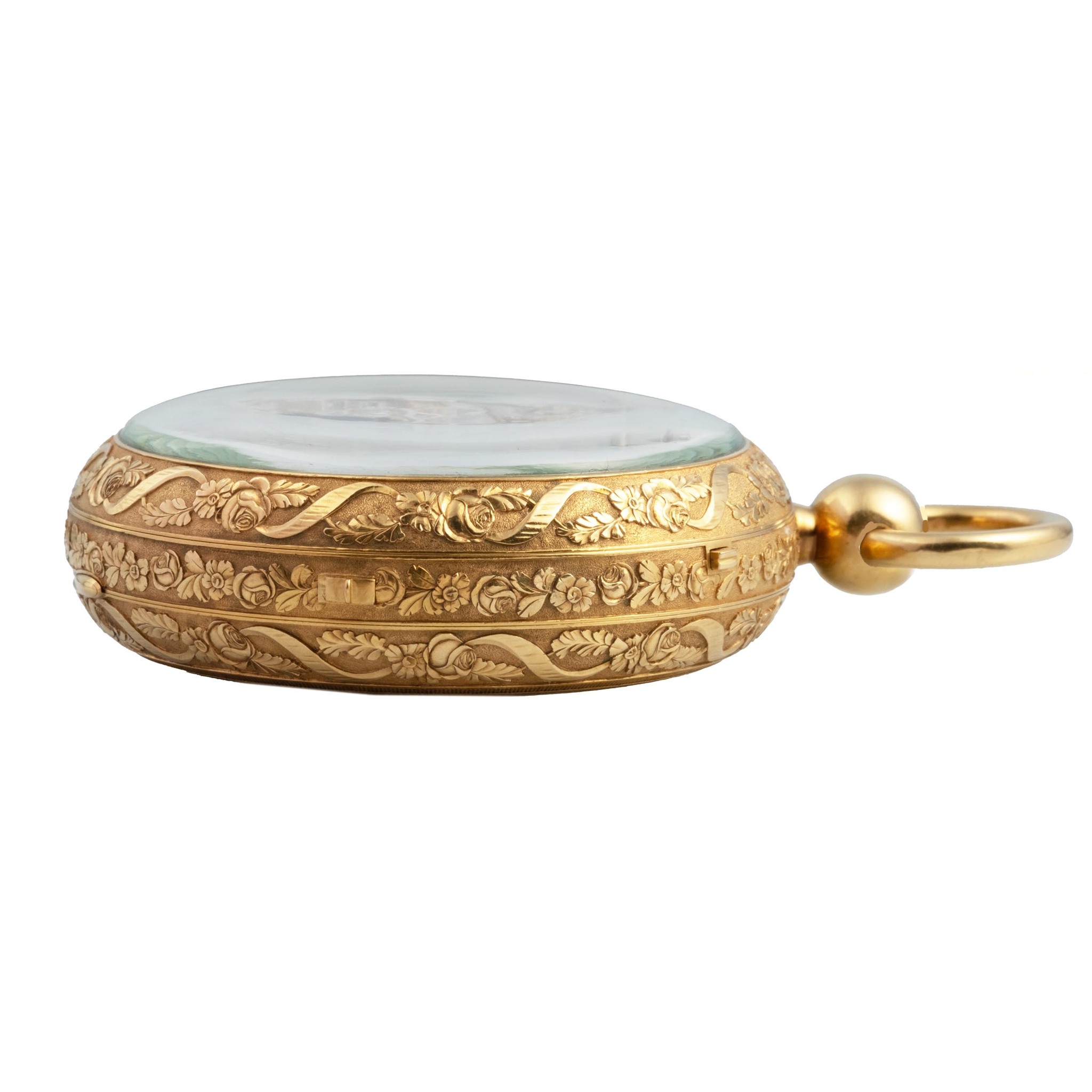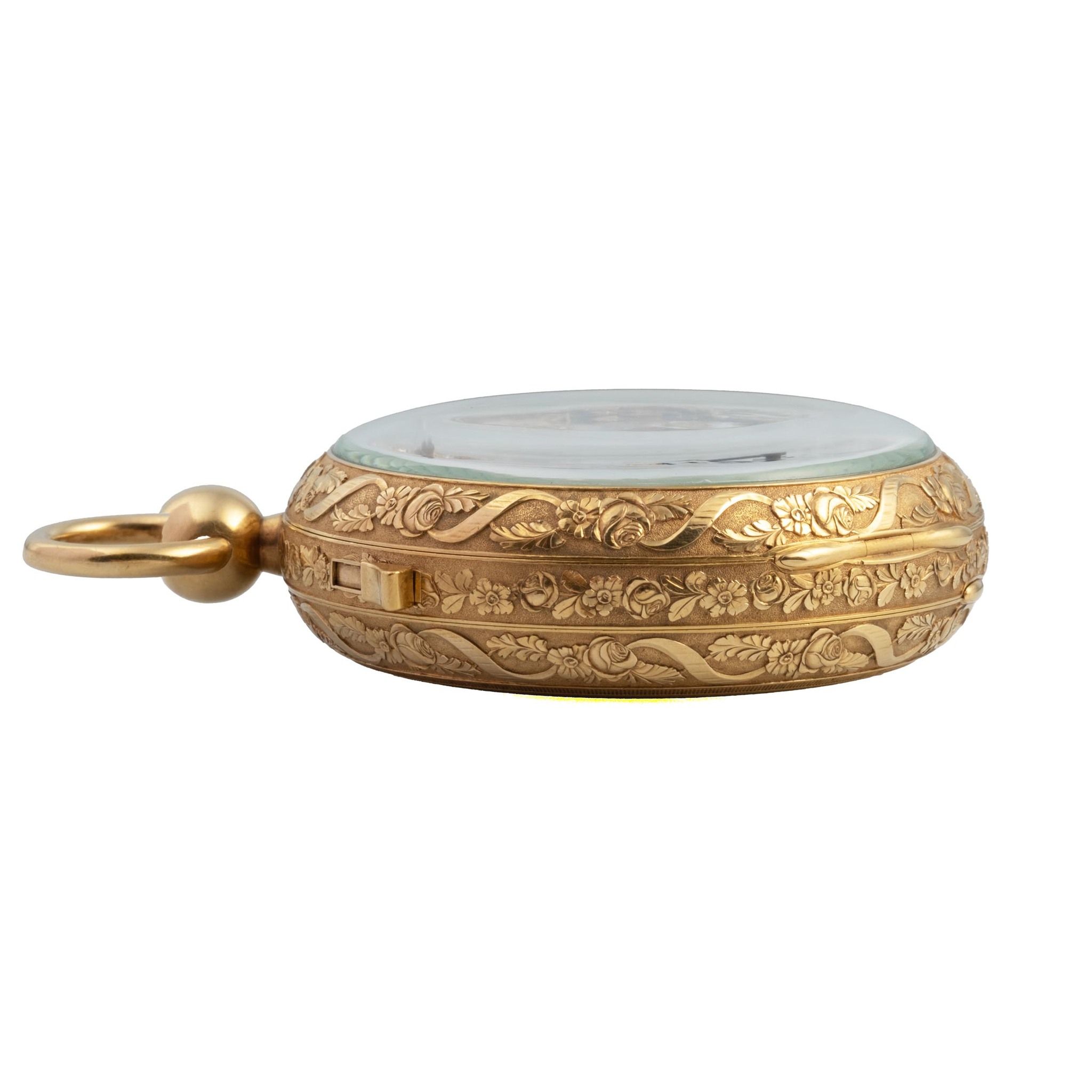Geneva, Nov 09, 2025
LOT 439
UNSIGNED, SWITZERLAND, TIGHTROPE DANCER, MUSICAL AUTOMATON WITH THREE HAMMERS MINUTE REPEATER MECHANISM, CASE BY ISAAC LAMBERT (GENEVA). MADE FOR THE TURKISH MARKET, 18K YELLOW GOLD
CHF 100,000 - 200,000
HKD 980,000 - 1,950,000 / USD 126,000 - 250,000 / EUR 108,000 - 216,000 / JPY 18,970,000 - 37,940,000
Sold: CHF 225,000
An important, large and heavy, 18k yellow gold open-face key-winding pocket watch with music, four automaton actions, and three hammers minute repeater. Case by Isaac Lambert, the back is guilloché (engine-turned), with, in the centre, a large chiselled medallion decorated with harps and flowers, chiselled bezels and case band decorated. The gold dial plate is enamelled and finely painted with a lakeside landscape of Oriental inspiration, depicting a fortified city with minarets and white-domed buildings. A moored sailing ship evokes an era of maritime exploration and trade. The central figure, the automaton tightrope walker, is a man dressed in traditional Oriental costume (baggy trousers, richly decorated tunic, and turban), walking along a tightrope with a long, multicoloured gold balancing pole in his hands. He bounces on his right leg while kicking with his left, adjusting the position of the pole as the rope flexes realistically with each movement. At the lower left, two automatons in Oriental attire are depicted: one playing a stringed instrument (probably a lute or Ottoman tambûr), the other playing a triangle. These figures are sculpted in multicoloured gold relief, enhancing the depth and richness of the scene. Another automaton at the lower right represents a fountain, from which water springs beneath a multicoloured gold cornucopia decorated with foliage — a traditional symbol of prosperity. In the background, a soft blue sky, orange hills, and trees are painted in exquisite detail with polychrome enamel. This refined miniature enamel style is characteristic of Geneva workshops specializing in automaton pocket watches during the early 19th century.
| Grading System | |
|---|---|
Grade: |
|
Case: 3 |
Good |
Movement: 3* |
Good Overhaul recommended, at buyer's expense |
Dial: 3-01 |
Good HANDS Original |
Brand Unsigned, Switzerland
Year Circa 1820
Case No. 526
Diameter 65 mm.
Caliber 53 mm., matte gilt, cylinder escapement, three arm balance, flat balance spring, index regulator, visible repeating mechanism with highly finished and mirror polished steel levres, with three hammers on three square-section gongs activated by a slide on the band, slides for music/silence on the side of the case. Musical movement ''sur plateau'', with large fixed brass barrel. Under the dial plate releases the ultra-complex automaton mechanism.
Weight 226 gr.
Signature Gold case bearing the maker’s mark ‘IL’ in a lozenge for Isaac Lambert, master case maker in Geneva
Notes
Isaac Lambert was a distinguished Genevan master case maker active during the early 19th century, a period considered the golden age of Geneva’s production of luxury musical and automaton watches. His maker’s mark — the letters “IL” within a lozenge — appears on numerous high-end gold watch cases created for some of the most prestigious Geneva workshops, including Piguet & Capt, Moulinié-Bautte & Cie, and other renowned horological houses.
Lambert specialized in crafting 18K gold cases richly engraved, engine-turned and often decorated with polychrome enamel. Many of these cases feature orientalist scenes with automatons such as tightrope walkers, musicians, or fountains, combined with musical and minute-repeating mechanisms.
His production was primarily destined for export markets — notably the Ottoman Empire, Persia, Russia, and China — where Geneva automaton watches were prized luxury objects. Lambert’s hallmark is well documented in the official Genevan goldsmiths’ registers and in major horological references such as Poinçons d’orfèvres genevois and Swiss Makers’ Marks.
Today, examples of his work can be found in major museum collections, including the Patek Philippe Museum in Geneva, as well as in important private collections and international auction records.

